Food for the Soul: London – Vermeer’s Music Lessons
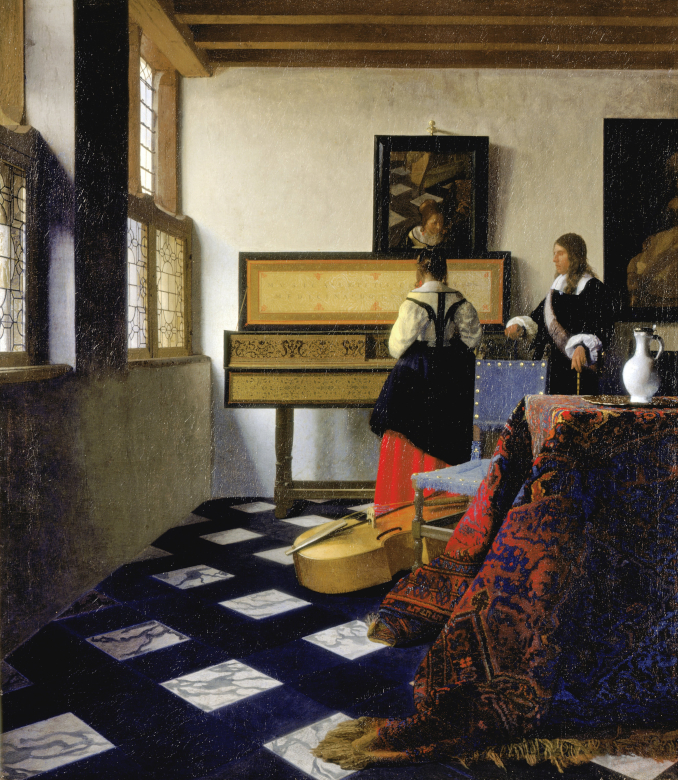
It so happens that all four Vermeers that can be found in collections in London are about making music. The most elaborate of them is actually called The Music Lesson, acquired by King George III in 1762. This canvas spent about a hundred years misattributed to other Flemish artists (either Frans or Willem van Mieris), but it was eventually identified as a Vermeer in 1862. As part of the Royal Collection, it does not leave Buckingham Palace for exhibitions—you have to go and see it. I did just that this fall.
Much has been written about this painting’s clues about music-making. Some critics have pointed out the different approach to music in Protestantism and Catholicism. Both religions were present in Vermeer’s life in 17th-century Delft, but they differed in their outlook on the role of music in life. Calvinists would have abhorred any music-making except singing psalms, whereas Catholics would have embraced music as a connection between the earthly and the divine. The artist, who converted to Catholicism, would have had, therefore, a more benign approach to music, as evidenced by a Latin inscription he put on the virginal: “Music is a companion in pleasure, a remedy in sorrow.”
But this canvas is also very much about a different art: that of painting. The composition is striking, with all of its important elements—the couple (a teacher and student? two lovers? fellow musicians?), a bulky virginal and bulbous viola da gamba, and a heavy rug slung over a chair—all clustered to the right. Only a row of windows and a long stretch of tiles are on the left.
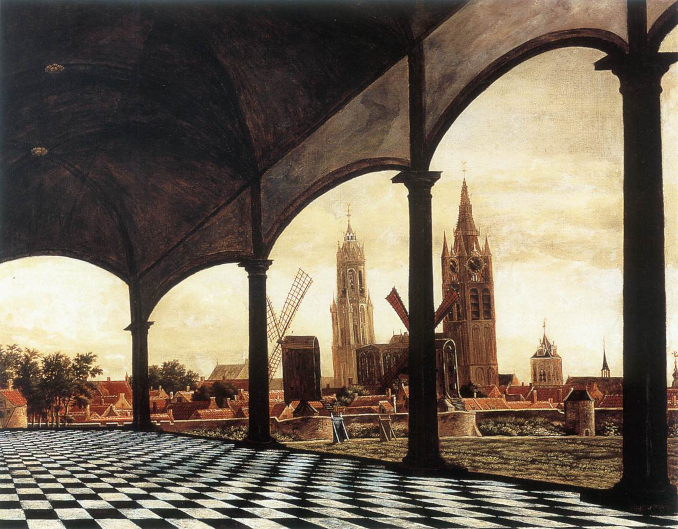
Those tiles are painted in a dramatic foreshortening that was very popular among Vermeer’s contemporaries, as evidenced, for example, by Daniël Vosmaer’s View of Delft from an Imaginary Loggia, painted in 1663. In The Music Lesson, we notice the tile floor before we notice anything else.
Vermeer uses another painterly trick in this picture, in the form of a mirror reflection. Thanks to a large mirror placed just above the virginal, we can see the face of the woman playing but … also a part of an easel. Vermeer is present and at work in this picture. He alludes to the presence of the artist who is creating the image in the same way that van Eyck did in his Arnolfini Portrait or that Degas will do 200 years later when he includes a camera stand in his Dancer Posing for a Photographer. So, while this is a picture about music-making for enjoyment or for religious expression or maybe for courtship, it is also a picture about visual art—again, not only about making it (as hinted at by the easel) but also about perceiving it, as signaled by the “unbalanced” composition, the presence of a mirror image, and the exaggerated perspective of the floor tiles.
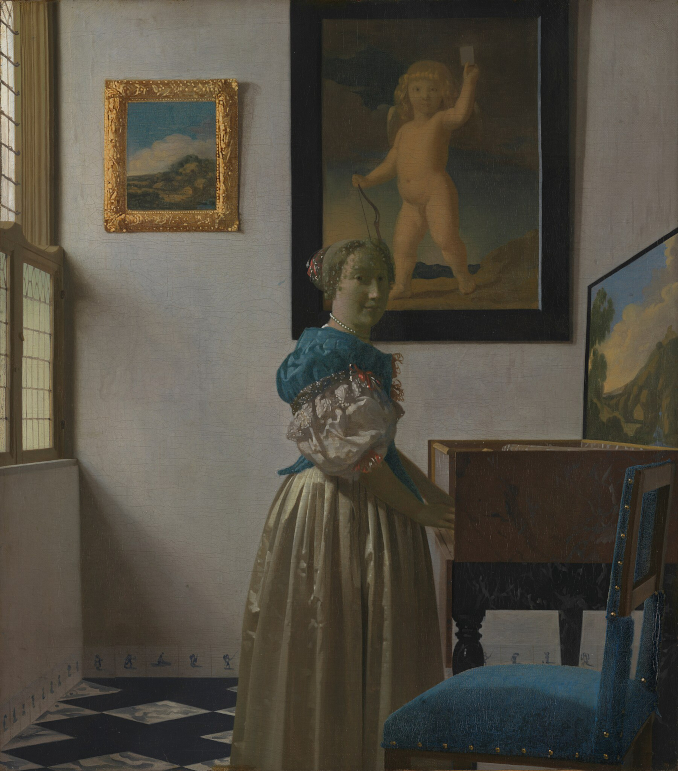
Two other Vermeer paintings in London collections feature a virginal but are much more conventional, both of them showing just one woman at the instrument. The National Gallery in London purchased A Young Woman Standing at a Virginal in 1892 from the estate of Théofile Thoré-Bürger—a French art journalist who brought Vermeer’s art back from oblivion in the 19th century. The virginal featured here has a lid that Vermeer painted as an elaborately decorated landscape painting; other instruments of this type, as evidenced by paintings by Vermeer himself and by other artists like Metsu, were plainer. Since the scene is dominated by a large picture of Cupid and the smiling woman who is well-lit by warm daylight, the mood of this picture is calm, happy, and, you could even say, “contented.” It feels like a picture of harmonious domesticity, perhaps praising happy, marital love.
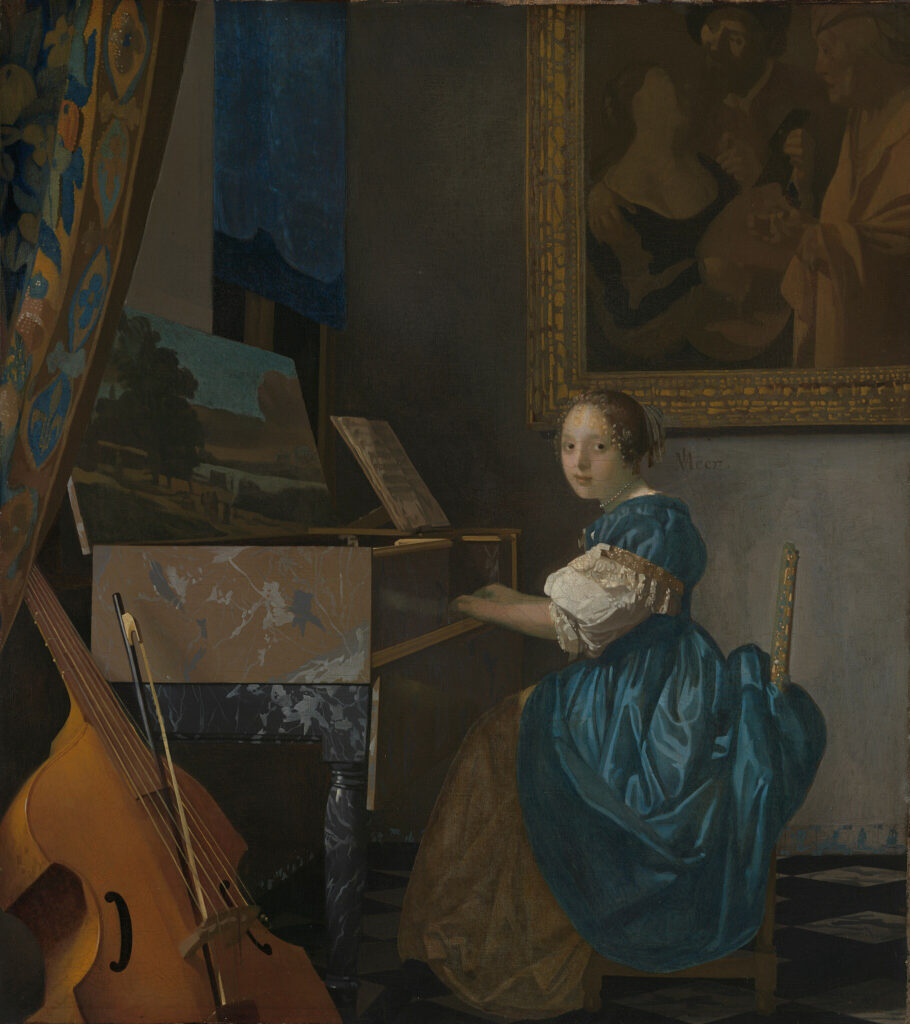
The second picture, A Young Woman Seated at a Virginal, is almost the same size as the other one and comes from the same period of the last five years of the artist’s life. However, this “painting with virginal” feels much less harmonious. There is no happy daylight—the woman is lit, a bit atypically for Vermeer’s single-women pictures, from the front. The painting on the wall is The Procuress (a picture by Dirck van Baburen that was in the artist’s household), so perhaps the theme is that of an illicit love or a paid relationship. The woman’s blue skirt is scrunched in the back, whereas other paintings by both Vermeer and other artists show skirts smoothed the way they are when women carefully sit down in a puffy gown. It looks like a clue, then—a dress in disarray and the viola (in itself a shape suggestive of a female body) in the front shown askew—there is a lot of disquiet in this picture. This is even more evident when we compare it with a similarly themed painting held at the Dulwich Picture Gallery, also in London, painted more or less at the same time by Gerrit Dou. Dou’s painting also shows a woman playing at the virginal, but there is no mystery here. A fair-haired woman is well lit from the front, with the viola and the curtain just serving as picturesque props, and the atmosphere is that of a cozy, warm home interior.
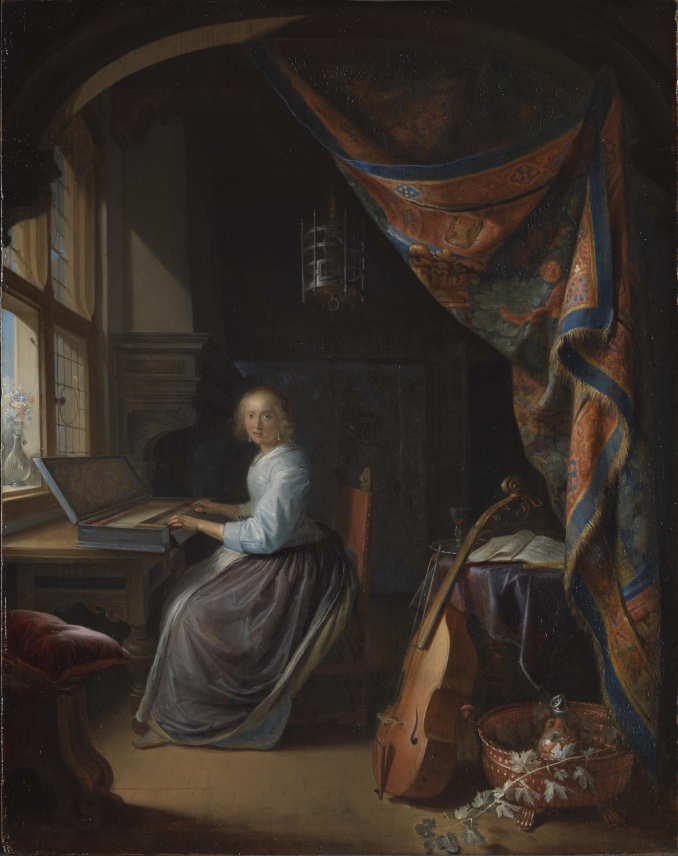
Dou paints a pleasant domestic scene; in fact, its composition is very similar to Vermeer’s earlier interior scenes. However, A Young Woman Seated at a Virginal has an entirely different mood; this Vermeer picture does not feel like a portrait of domesticity, with the nighttime setting suggesting perhaps a party or maybe a love tryst. As always, the subtle Vermeer leaves the interpretation to the viewer, but there are interesting clues.
To see the last “music” picture in London, you have to go to the immensely picturesque Kenwood House—a palace and grounds at the edge of the Hampstead Heath area of London with acres of greenery and offering a splendid panorama of the city. Built in the 17th century and remodeled in the 18th century, Kenwood House was donated to the nation in 1929 with the stipulation that its palatial furnishings and art collection remain intact. So, this is another Vermeer work that has to be viewed in situ.
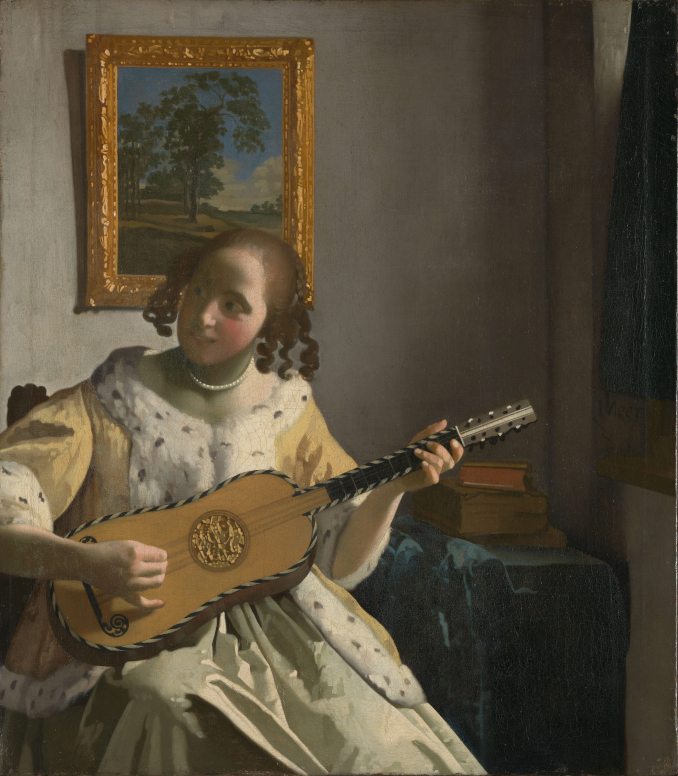
The Guitar Player shows a woman in an informal morning jacket, but she is already coiffed and wearing pearls and a silk dress. In other words, she is ready for company. She is playing a Spanish guitar, an instrument that had become popular in the Netherlands not long before this picture was painted in around 1672.
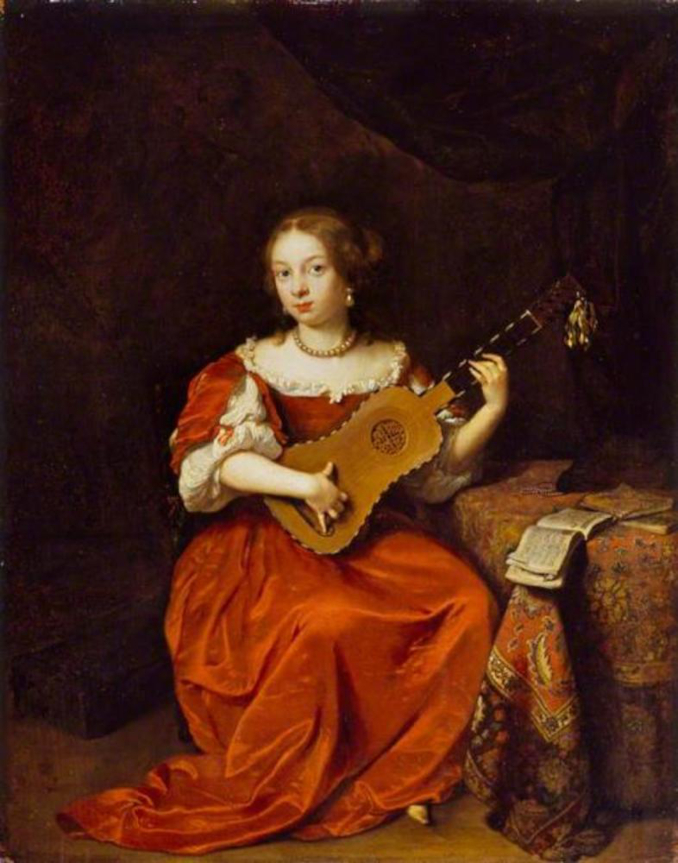
To better understand the difference between what Vermeer painted as compared with other artists of the period, it helps to take a look at a painting by Caspar Netscher, entitled Young Woman Playing the Guitar, painted in 1669 and displayed at the Wallace Collection in London. The Netscher painting is a straightforward portrait of a woman. She is facing us directly, playing a guitar and posed against a minimal background of dark curtains and a colorful rug to the side. This is all there is—a well-dressed woman who poses while playing.
If you look at the Vermeer painting, the same subject—a young woman playing this “modern” guitar—is treated differently. The model is sitting so far to the left that her sleeve is cut off by the frame. She is not looking at us; she is smiling and singing with a coquettishly tilted head, but her attention is on someone off-frame who we cannot see. She is signing and playing for someone, presumably a lover (informal clothing!). We the viewers are just incidental witnesses to an interaction of which we only have a glimpse, as if we were peeking from a doorway. This is not a formal portrait—it is a scene of a musical conversation with someone.
Vermeer never disappoints. Even when his paintings are conventionally themed (genre scenes of music-making were all the rage at the time), he has his own compositional and narrative ideas that are original and compelling, even hundreds of years after the artist created them.
